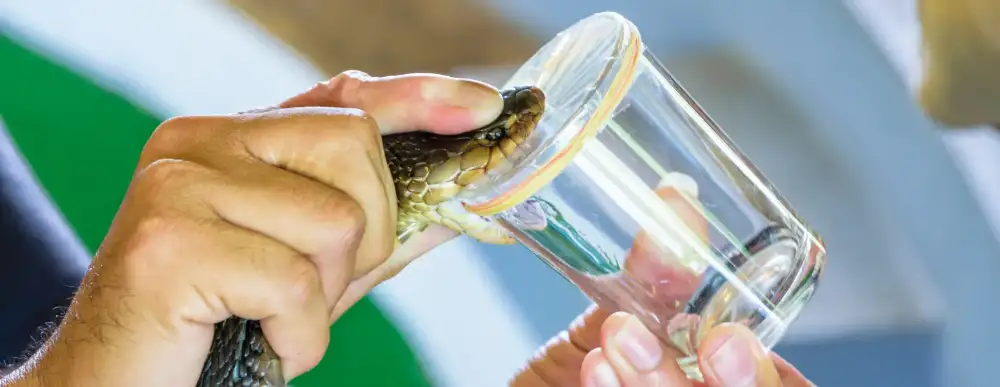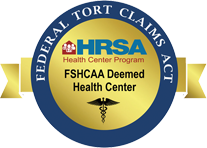We have all encountered snakes at some point in our lives. Most of the time nothing happens in these encounters other than us being scared. Most snakes will not bite unless they feel threatened, but some are aggressive. It is important to know what to do if you or someone you are with is bitten by a snake.
There are about seven thousand venomous snake bites reported every year in the U.S., but they are rarely deadly. A bite from a venomous snake can cause serious problems even if it does not inject venom. The safe thing is to treat all snakebites as if they are venomous. In the U.S. the venomous snakes are pit vipers (rattlesnakes, water moccasins, etc.) and coral snakes.
Rattlesnakes are the largest of the venomous snakes. They are found in almost every habitat and account for many of the venomous snake bites in the U.S. Rattlesnakes are easily identified by the rings at the end of their tails that they shake when they feel threatened. Symptoms of a rattlesnake bite are immediate and include severe pain, drooping eyelids, low blood pressure, thirst, tiredness, or muscle weakness. Water moccasins, copperheads, and coral snakes are other venomous snakes that live in the United States but not in Idaho.
A good rule of thumb is to always treat any snakebite as venomous. The first thing to do after a snakebite is call 911. Getting emergency treatment at a hospital for a snakebite is the most important treatment. It can be helpful to note the time of the bite as well. Otherwise, keep as calm and still as possible to prevent the venom from traveling more quickly through the body. The area around the bite will likely swell, so remove constricting jewelry or clothing. Carry or transport the snakebite victim out of harm’s way. Take a picture of the snake if you can, but do not waste time trying to find it. There is no need to kill or handle the snake. You’ll likely get bit as well. Many recommend washing the bite, but don’t do this with stream water or in a lake. Placing a loose, sterile dressing over the wound is helpful. Once the victim is at a hospital, they will be monitored, and if appropriate, antivenom will be administered.
Factors that can affect the outcome of snakebites are the size, physical condition, and temperature of the snake, the age and physical condition of the victim, the area and tissue bitten, the amount of venom injected, the time it takes to get treatment, and the quality of treatment.
Unfortunately, there are some outdated first aid techniques that people still try to use for snakebites. Many of them are unhelpful. Some are even harmful. For example, do not use a tourniquet, cut into the snakebite wound, or put ice on the bite. These can further damage the tissue surrounding the snakebite. Do not give any medications unless a doctor tells you to. Do not attempt to suck the venom out with your mouth or another devise. Do not raise the snake bite area above the victim’s heart. The last thing you want is the venom to go to the heart where it can be distributed to the rest of the body. Keeping this in mind, putting the wound lower than the rest of the body can be helpful to stop the spread. Again, the best first aid is remaining calm and calling 911.
A dry bite happens when a venomous snake bites but does not inject any venom. This is actually the most common type of snake bite. Snakes use dry bites as a defense mechanism to keep threats at bay. Bites by non-venomous snakes are also considered dry bites. However, there isn’t a good way to know whether a snake injected venom or not when it bit so seek medical attention regardless. Dry bites can still cause serious injury because the bite will still be a deep puncture wound and may become infected. They can also cause anaphylaxis in certain people. In ninety percent of dry bite cases there is minor pain and redness that varies depending on the site of the bite.
There are ways to reduce the risk of snakebites such as treading heavily when in the wilderness as this creates ground vibration and noise which often causes snakes to flee the area. Snakes will approach areas when attracted by prey so regular pest control around your home is important. It is best to remain silent and motionless if you come into direct contact with a snake and step away slowly and cautiously if the snake does not flee. Use a flashlight at night when camping and do not reach blindly into hollow logs, flip over large rocks, enter old cabins, or other snake hiding places.
Candice Hutchins is an RN at the Health West Pediatrics clinic. She has been a nurse for seventeen years with most of her experience in Postpartum and well-baby nursery.

Movement is key to health







